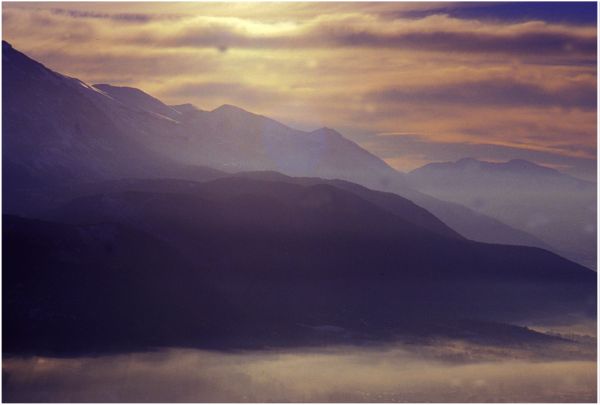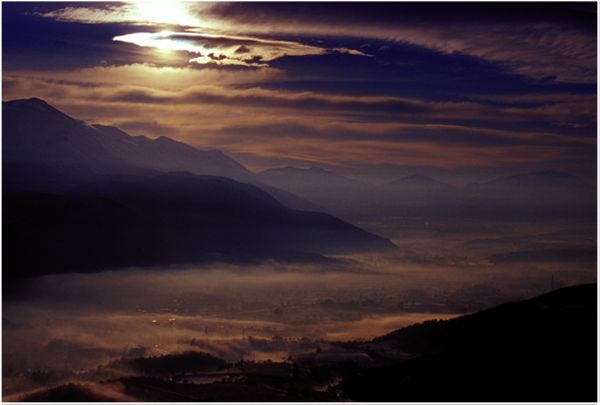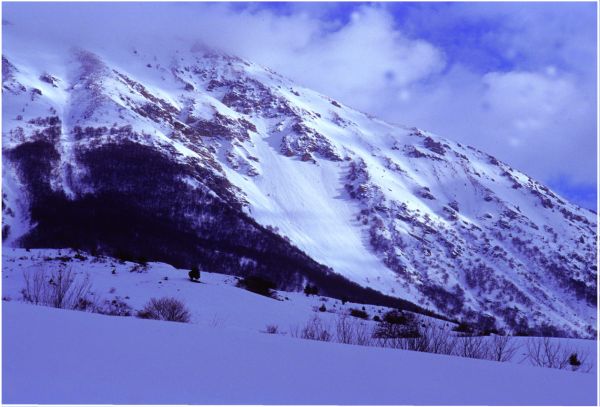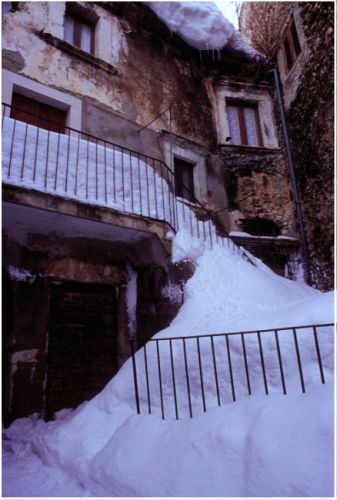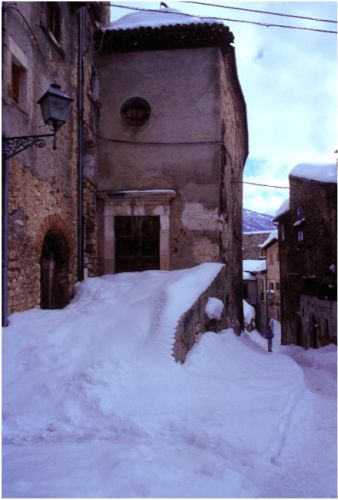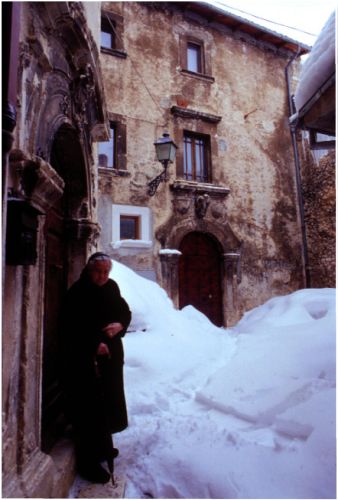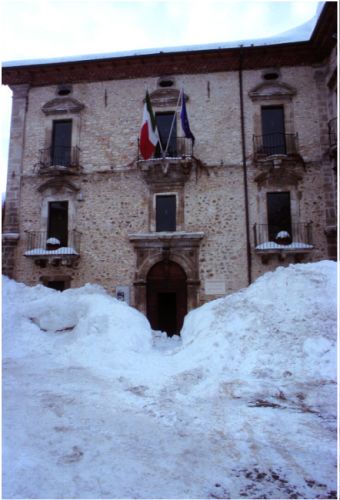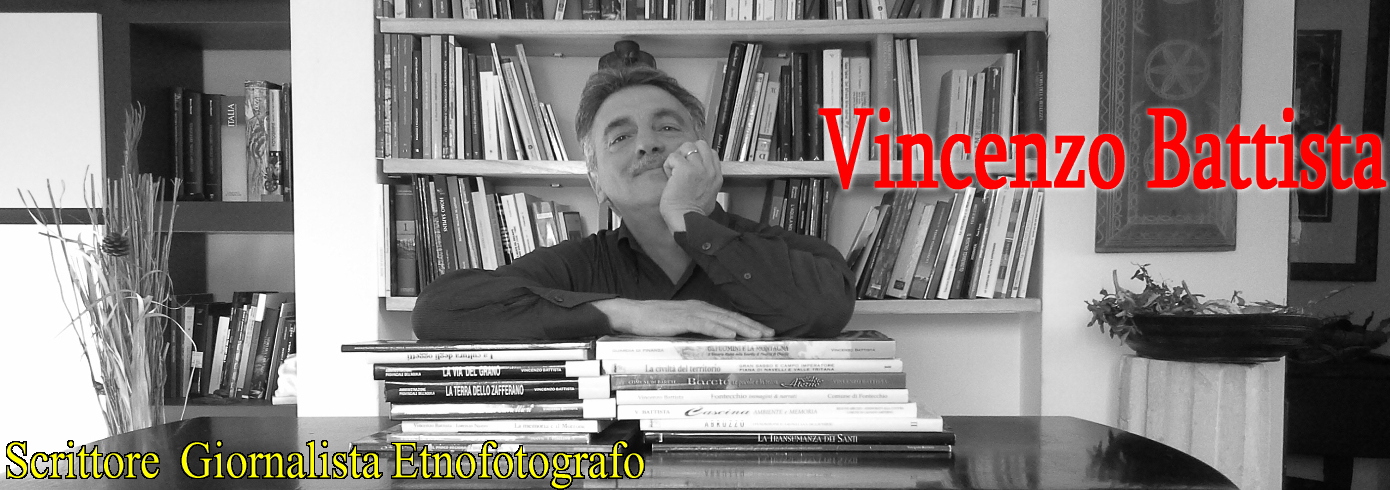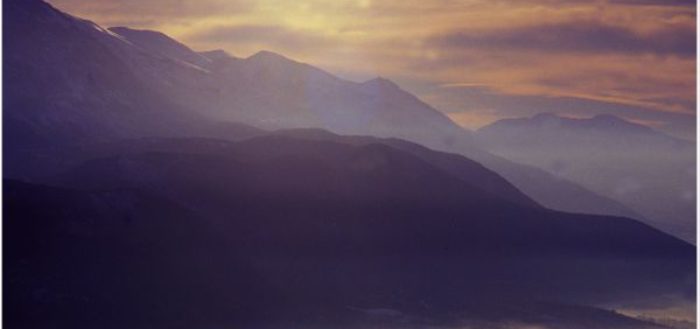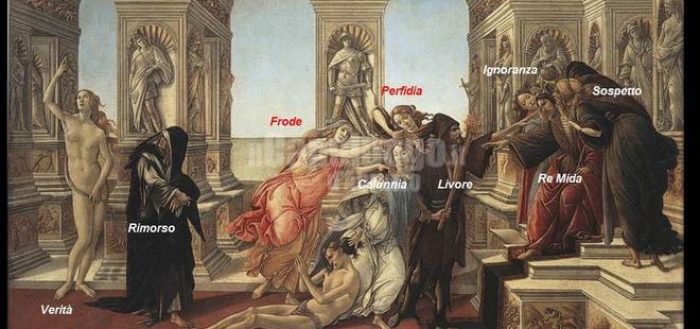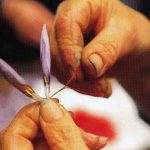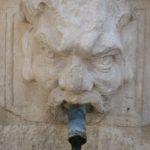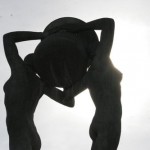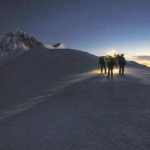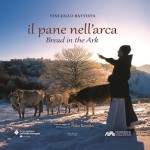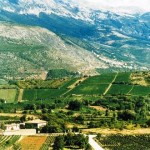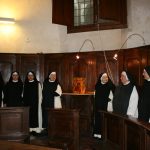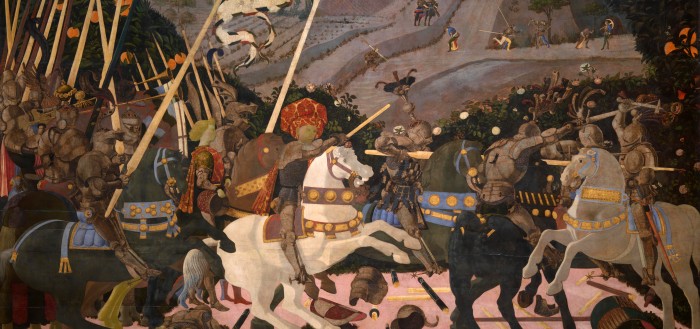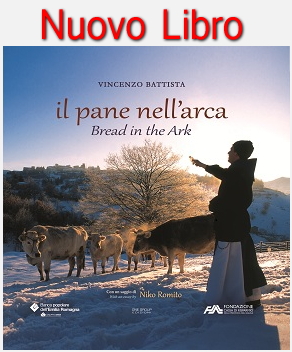La Maiella si tinge di rosa.
Testo e fotografia di Vincenzo Battista.
“La camicetta” di Maja si tinge di rosa, del tramonto: “La Bella addormentata”, la Maiella, distesa geologicamente con il suo corpo pietrificato per circa 20 chilometri, rinnova la sua antica leggenda nel versante occidentale “dell’Abruzzo Aquilano”, mentre scendiamo con gli sci da escursione sull’orlo a trina del ” merletto” di monte Porrara, scolpito dai ghiacci e divenuto nell’immaginario collettivo il suo petto e l’addome; scivoliamo verso Campo di Giove: dal nuovo disegno urbanistico a stella, a stento riusciamo a riconoscere l’antico abitato di Campus Jovine, piccolo nucleo compatto intorno al colle, sicuramente così come lo vide Fortunato Rosselli, classe 1855, una delle prime guide, poi per generazioni, della Maiella e di Campo di Giove.
Con la mantella dei pastori, il bastone da guida alpina e le gambe avvolte da un rudimentale panno (le ghette) intorno alle gambe, settantacinquenne, in una immagine del 1930, posa in una fotografia scattata da un escursionista che ha portato in una ascensione invernale su Monte Amaro (2795 m.), con un’aria che sembra esattamente quella indicata dalla leggenda che lo avvolge, insieme alle sue gesta che da queste parti narrano incontri con gli orsi e i branchi di lupi della Maiella. Un uomo appartenuto alla storia del pionerismo escursionistico dell’Ottocento e dei primi decenni del Novecento. Ancora immagini della famiglia Rosselli, datate questa volta 1939, conservate sino ad oggi: la casa, e, fuori i muli, prima di una escursione sulla Maiella che insieme a decine e decine di altre immagini etnografiche di altre famiglie e di escursionismo, costituiscono i materiali di un “Archivio della memoria” della montagna e delle sue genti così affiorato, che sembra distante anni luce dal turismo vacanziero della stazione invernale.
“Si libera un passato” dicono gli amministratori, e con esso un “progetto tematico sulla cultura dell’escursionismo e la montagna” che il Comune di Campo di Giove promuoverà in una mostra permanente digitale, autore il prof. Vincenzo Battista, costituita dalle straordinarie immagini che dalla fine dell’Ottocento al dopoguerra documentano il paesaggio montano, i luoghi, il lavoro e in particolare gli uomini dell’epopea della “montagna sacra”.
Testo in inglese a cura della prof.ssa Piera Badia.
Maja’s “blouse” turns into pink, at sunset: “Sleeping Beauty”, the Maiella, geologically lying with her petrified body for about 20 km, renews her ancient legend on the western slope of the “Aquilan Abruzzo”, while we get down on our skis returning from an excursion on the lace-like edge of Monte Porrara, sculpted by ice, which has become in the collective imagination her breast and abdomen; we go down toward Campo di Giove: from the new, star-like urban plan, we can only with some difficulty recognize the ancient settlement of Campus Jovine, a compact nucleus around the hill, surely exacly as was seen by Fortunato Rosselli, born 1855, who was to become one of first guides, for generations, of the Maiella and Campo di Giove.
With a shepherd’s mantle, the walking-stick typical of Alpine mountain guides and the legs covered with rough cloth (gaiters), seventy-five years old in a picture dated 1930 taken by an excursionist that he had escorted through a winter ascent on Monte Amaro ( 2795 meters), with an attitude which is exactly that of the legend around him, telling of his deeds, of his encounters with bears and wolf packs in the Maiella. A man belonging to the history of 19th century – early 20th century mountaineering. More images of the Rosselli family, dated this time 1939, preserved for our days: the house, and outside the mules, before an excursion on the Maiella, that along with dozens and dozens of other ethnographic images of other families and excursions, will form the material of a “Memory Archive” of the mountain and its people which has just been brought to the surface, a primitive tourism that seems light years away from the festive tourism of the present-day winter resort.
“The past has been discovered” say the administrators, and with it a “theme project on the culture of mountaineering and the mountain ” that the town council of Campo di Giove will promote through the establishment of a permanent digital exhibition made of extraordinary images that from the late 19th century to the postwar period will document the mountain landscape, the places, man’s work and more closely, the epic men of the “sacred mountain”.
For this issue of “In Cammino” images from a research in progress in the centers of Cansano, Campo di Giove and Pacentro. A homage to the environment, the local communities, the many themes and subjects where the ethnographic research of Vincenzo Battista will proceed through the year 2002. All the economic and historical, anthropological and environmental, archival and iconographic, bibliographical and ethnographic data will be gathered in a permanent digital exhibition, which will be available as an itinerant event to schools and professionals, tourists and researchers of Italian history and environment. We are especially honored to show to the thousands of Abruzzese abroad originary of Pacentro, Cansano and Campo di Giove, what their land still preserves as to values, environments and traditions of the past.
